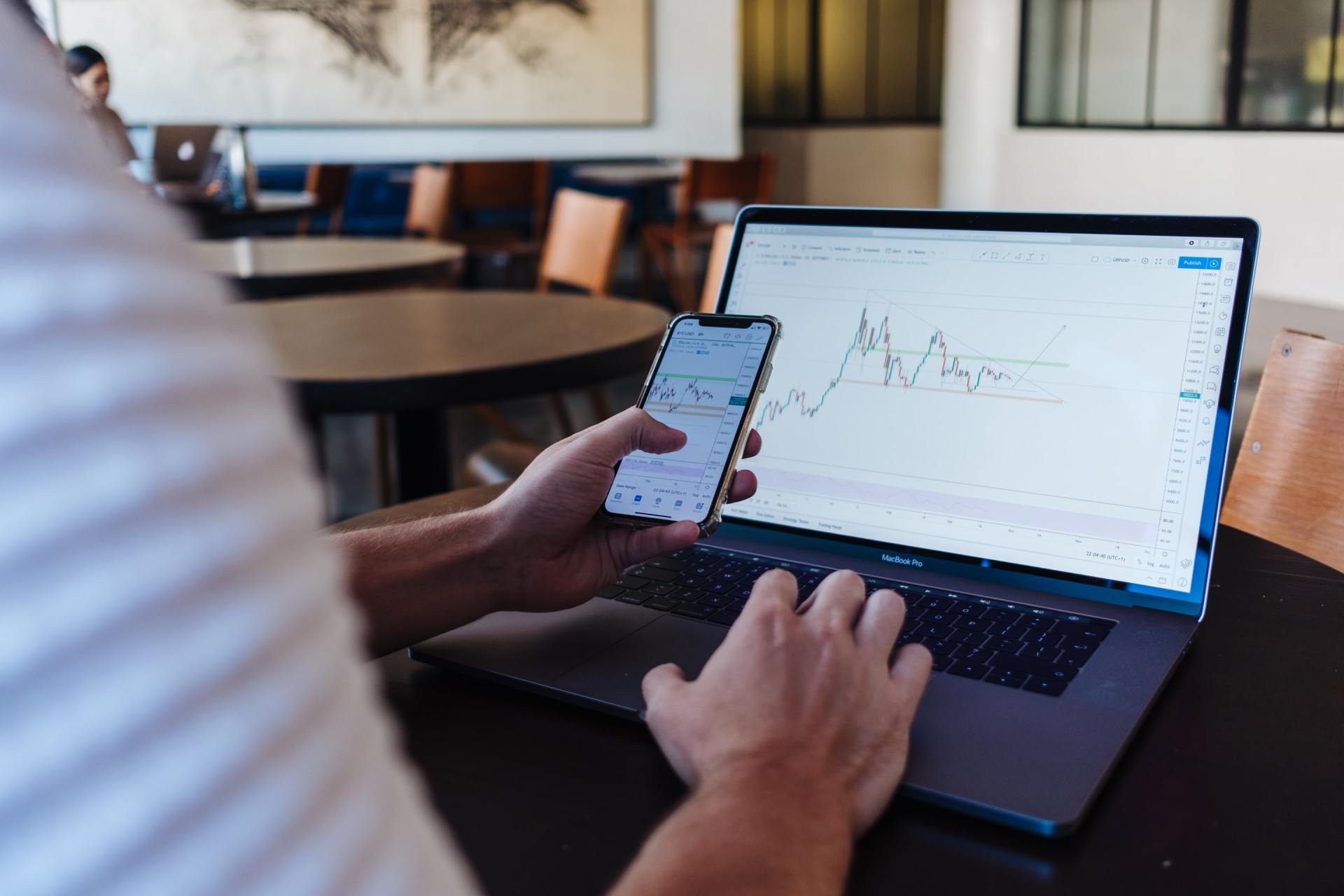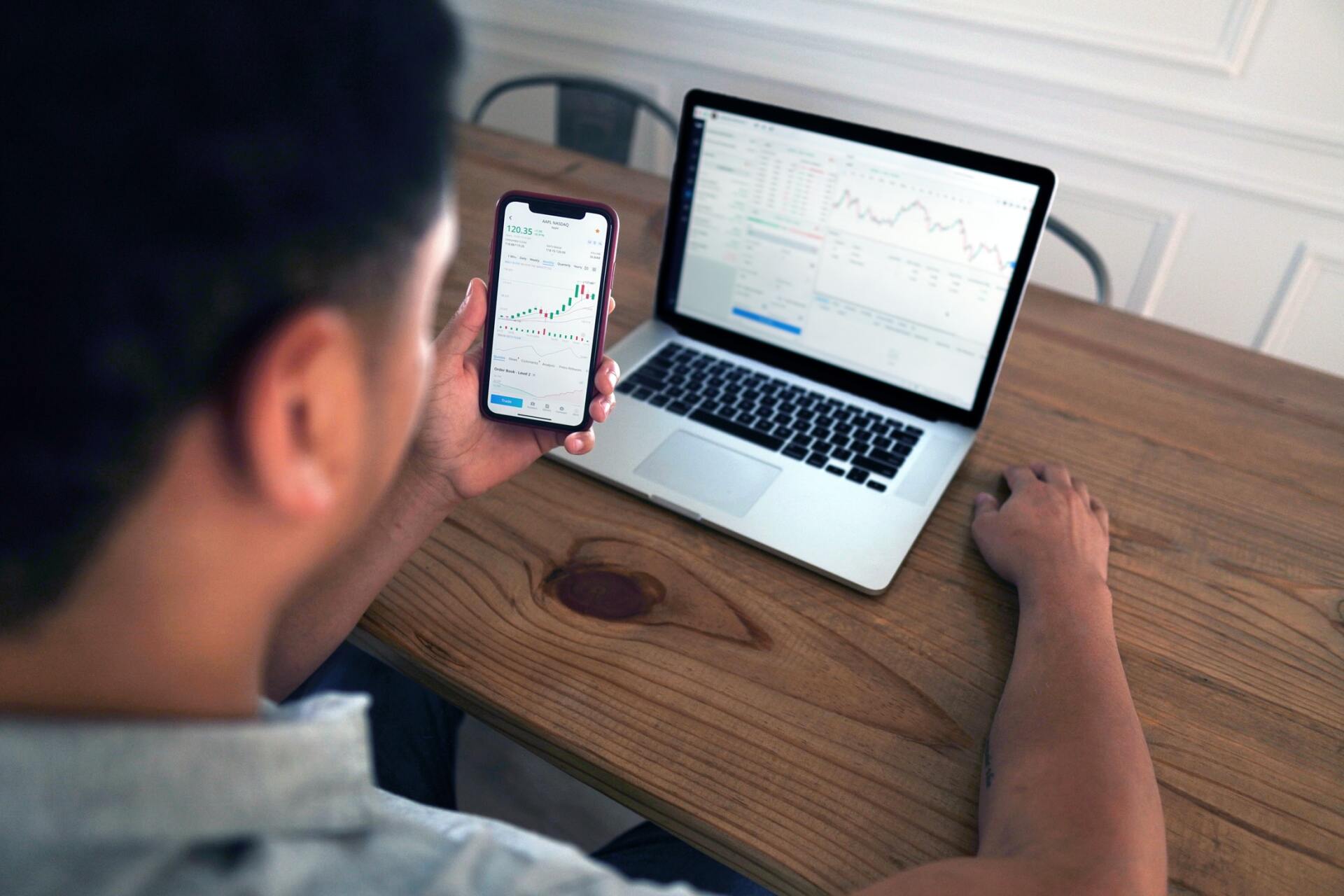Blog Layout
Market Commentary | July 2019
Rob Kellogg, CFA® • Aug 05, 2019
THE MARKET
The S&P 500 reached a new all-time high on July 26th pushing its gains for the year to over 20%, which is the best performance during the first seven months of the year since 1997.1
The markets continued their growth in 2019 with the S&P 500 increasing another 1.31% in July, the DJIA climbing another 0.99%, and the NASDAQ finishing the month up 2.11%.
However, due to the strengthening dollar, commodities and international/emerging markets ended the month down. MSCI ACWI ex US which represents both developed and emerging market countries (excluding the United States) finished the month down 1.21% and the Bloomberg Commodities Total Return Index finished the month down 0.67%. The Barclays Aggregate Bond Index ended the month of July relatively flat.
Overall, the above-mentioned asset classes are all positive for the year as seen in the chart below.
In a rare occurrence, both equities and fixed income are having a great year.
2019 marks just the 10th time since 1980 that both the S&P 500 and long-term treasuries are up more than 5% to start the year.3
(note: SPAB is used as a proxy for long-term treasuries when investing in fixed income). Gains occurring in both equities and fixed income during the same period is seen as unusual. When bond prices rise, their yields decrease, which is usually an indicator that an economic slowdown is ahead so one would normally pull back on their equity exposure and vice versa. However, uncertainty surrounding interest rates and what the Federal Reserve will do has led to positive performance in both stocks and bonds this year. Equity investors are still optimistic that the recovery will continue, while fixed income investors are a little more weary. Thus, causing investors to place money in both stocks and bonds.
SPEAKING OF INTEREST RATES
Investors had to wait until the last day of the month for the Federal Open Market Committee (FOMC) meeting to see whether the Fed would cut interest rates or not, and if so, by how much.
As discussed in last month’s commentary, it was not a foregone conclusion that rates would be cut, but there was the strong possibility. Before diving into the outcome of the July 31st FOMC meeting, it is be helpful to understand why the Fed decides to increase or decrease rates.
For the last 11 years, the Fed has either stood pat on interest rates or decided to increase them, which is seen as tightening monetary policy. Following the 2007 – 2009 Financial Crisis, the Fed cut rates to 0% in December of 2008, where they remained there for seven years.4
When interest rates are low, it means that it is cheaper to borrow money (For example, taking out a car loan is more appealing at 2% than at 10%). The reason for low rates is to stimulate the economy and encourage consumer spending. The federal funds rate is the rate at which banks and credit unions lend money to other depository institutions overnight. Rates on credit cards and home equity lines of credit are cheaper, along with rates on mortgages and other loans. In the same way, companies can borrow money cheaper and invest those funds to grow their business.
Both consumer and business spending increases which leads to economic growth. With the economy having experienced quite the recovery, since December of 2015, the Fed has slowly increased rates to a more normalized level in order to stabilize inflation or to slow the rapid growth of the economy. With the S&P 500 hitting an all-time high in July of 2019, many people are wondering why the rates are being cut? Even though the economy is healthy, it isn’t behaving as expected with inflation and market-determined interest rates still lower than anticipated.5 A rate cut would help to normalize both market-determined rates and inflation.
When all was said and done...
The Fed announced a 0.25% decrease of interest rates to a target range of 2.00 – 2.25%.6
This is the first decrease since December of 2008.
Many investors, including the White House, thought that this should have been somewhat of an all or nothing rate change. Either don’t cut rates at all or cut rates by 0.50% or more to signal that this would only be a onetime decrease.
The 0.25% rate cut left the remainder of the year up for interpretation and comments by the Fed Chair, Jerome Powell, which only seemed to confuse investors even more. Throughout his post-meeting press conference, he claimed that the rate cut was a mid-cycle adjustment and that future rate cuts were not a sure thing. These comments caused a quick decline in the stock market. He followed that up by later backpedaling in the same press conference which quickly caused the market to increase and recover the losses that it just incurred.7
This volatility during the short-term time frame of a press conference shows just how volatile the stock market can be with rate uncertainty. Overall, due to the non-transparent Fed, investors can expect more market volatility in the month of August with a slightly bullish outlook on equities.
IN INTERNATIONAL NEWS
European Central Bank, Brexit, and China uncertainty dominate headlines
On July 2nd, Christine Lagarde was nominated as the new president of the European Central Bank (ECB) and she will be leaving her current position of director of the International Monetary Fund (IMF).8
The ECB is the central bank of the 19 European Union countries that have adopted the euro. The IMF is an international organization headquartered in Washington, D.C., consisting of 189 countries with the goal of promoting economic global growth and financial stability, encouraging international trade, and reducing world poverty. The announcement of Lagarde’s change in roles is arguably the biggest change in leadership for the international financial system in decades. Lagarde will leave the IMF in good shape having taken on a broad range of issues, while her task with the ECB will be a tall one. The European environment calls for someone not only with technical skills but with the political wherewithal to navigate the course. Can the ECB stabilize the European economy?
Boris Johnson was elected as Prime Minister of the United Kingdom on July 23rd following Theresa May’s resignation.9
Brexit led to May’s resignation and it will undoubtedly be the focus of Boris’ early months in office. He has taken a pro-Brexit stance and has been quoted as saying a Brexit deal will be reached “do or die” by the October 31st deadline. This could mean the U.K. leaves the European Union without a deal in place, although that is not the ideal scenario and is unlikely. Johnson could also bypass parliament. Regardless, Johnson is a brash figure and how he handles Brexit will matter overseas and here at home in the United States.
U.S.-China trade talks remained stable with the two countries in a truce for most of July. However, on July 31st, face to face negotiations between China and the United States did not lead to a deal.10
The topics of focus were forced technology transfer, intellectual property rights, non-tariff barriers and agriculture. Negotiations are expected to continue in September. However, Trump announced new tariffs on Chinese goods to start the month of August which led to China devaluing its currency on August 5th. The market did not react kindly to the news from China. Expect a more detailed update on the situation in next month’s commentary.
MAINTAIN A DISCIPLINED APPROACH
With all the uncertainty surrounding interest rates, Brexit, US-China trade talks, and market volatility, it is wise to make sure that you maintain a disciplined investment approach.
Maintain the asset allocation that resulted from your risk tolerance questionnaire. It is never encouraged to try and time the market by pulling out funds based on news flashing across the television. Those are impulse decisions and often lead to underperformance in your account.
While it may make sense to increase or decrease your risk tolerance at times, please don’t hesitate to consult a financial professional in order to make sure your investments are aligned with your goals and risk tolerance.
*Returns are based on the S&P 500 Total Return Index, an unmanaged, capitalization-weighted index that measures the performance of 500 large capitalization domestic stocks representing all major industries. Indices do not include fees or operating expenses and are not available for actual investment. The hypothetical performance calculations are shown for illustrative purposes only and are not meant to be representative of actual results while investing over the time periods shown. The hypothetical performance calculations for the respective strategies are shown gross of fees. If fees were included returns would be lower. Hypothetical performance returns reflect the reinvestment of all dividends. The hypothetical performance results have certain inherent limitations. Unlike an actual performance record, they do not reflect actual trading, liquidity constraints, fees and other costs. Also, since the trades have not actually been executed, the results may have under- or overcompensated for the impact of certain market factors such as lack of liquidity. Simulated trading programs in general are also subject to the fact that they are designed with the benefit of hindsight. Returns will fluctuate and an investment upon redemption may be worth more or less than its original value. Past performance is not indicative of future returns. An individual cannot invest directly in an index. Data as of December 29, 2017.
Advisory services offered through ChangePath, LLC a Registered Investment Adviser. Please consult your investment adviser representative for investment advice tailored to your individual circumstances; the material presented herein is of a general nature and for informational purposes only.
"When interest rates are low, it means that it is cheaper to borrow money (For example, taking out a car loan is more appealing at 2% than at 10%). The reason for low rates is to stimulate the economy and encourage consumer spending."
"The Fed announced a 0.25% decrease of interest rates to a target range of 2.00 – 2.25%.6 This is the first decrease since December of 2008."
"The ECB is the central bank of the 19 European Union countries that have adopted the euro."

03 Dec, 2021
November was a dizzying month for investors. The highlight? Earnings. 82% of companies1 beat estimates this quarter, despite headwinds such as supply chain constraints and inflation. The market’s biggest muse? Elon Musk’s twitter handle, with tweets such as (paraphrased) “should I sell 10% of my Tesla stock?” The most exciting job? Fed watcher. We started tapering, saw a plethora of hot inflation data, and gleaned insight from Federal Reserve Chair Jerome Powell on the last day of the month. November 2021 Market Returns

03 Dec, 2021
October was another positive month for the markets after September’s pullback. So far in 2021, the S&P 500 had nine positive performing months, September being the only hold out. The index ended up 6.9%, even though the first week of the month started a bit volatile. However, 2021 is looking robust, even if November and December aren’t large contributors, as the YTD performance through October is 23.9%. 1

By Rob Kellogg, CFA®
•
07 Oct, 2021
September ended the streak of seven positive months in a row for the S&P 500 as it was the first negative month for the index since January of this year. The index ended the month down 4.76%, but it is still up nearly 15% on the year. That is the worst monthly decline for the index since March of 2020 when it fell 12.51%. 1

By Rob Kellogg, CFA®
•
07 Sep, 2021
August was one of the year’s best months for the investors as the S&P 500, the Dow Jones Industrial Average (DJIA), and the NASDAQ Composite each hit new all-time highs. It is the seventh straight month of increases for the S&P 500 as it finished the month up 2.90%, and the index is now up 20.41% for the year. 1 Coming in alongside market highs was earnings growth as 98% of companies in the S&P 500 have now reported for the second quarter. Earnings were expected to be higher this year relative to the lower levels caused by the virus in 2020 as estimates for second quarter earnings growth came in at 63%. However, with almost all companies having reported, earnings growth significantly outperformed expectations as it came in at 89% helping the market reach new highs. 2

By Rob Kellogg, CFA®
•
05 Aug, 2021
The S&P 500 continued to climb for the fifth straight month as the index hit a new all-time high on July 29 th . 1 The index finished the month up 2.27% and is now up 17.02% on the year. The Dow Jones Industrial Average (DJIA) and the NASDAQ Composite both increased during the month as well finishing up 1.26% and 1.20% respectively. Both indices are now comfortably in double digit returns for the year. Small cap stocks took a significant hit as the Russell 2000 fell 3.65% during the month, but it is still up 12.73% on the year. As investors move some of their equity gains into fixed income and the Fed continues with their asset purchases, bond demand has increased leading to a return of 1.12% for the U.S. Agg in the month of July. It is now down just 0.50% on the year. 2

By Rob Kellogg, CFA®
•
05 Jun, 2021
The S&P 500 Index continues to climb in June as it finished the month up 2.22% leading to a 14.41% increase on the year. The technology heavy NASDAQ led the way during the second quarter as it was up 9.50% on the quarter following a strong June, and it is now up 12.50% on the year. The Dow Jones Industrial Average (DJIA) did not follow suit during the month of June as it was down 0.08%, but the index is still up nearly 13% on the year. 1

By Rob Kellogg, CFA®
•
07 May, 2021
Equities fell on the last trading day of April as investors likely took their share of profits after positive news regarding corporate earnings and economic data. However, the major U.S. indices still finished in positive territory for the third straight month as the S&P 500 has hit 25 record highs thus far in 2021. 1

By Rob Kellogg, CFA®
•
05 May, 2021
The markets started off strong in May before running into inflation fears towards the middle of the month. After those fears were somewhat curbed by the Fed, markets rallied to end the month. The S&P 500 index is up nearly 12% on the year after it finished the month of May up 0.55%. This is the fourth positive month in a row for the index after it finished down just over 1% in January. The Dow Jones Industrial Average (DJIA) finished the month up nearly 2% and is now up 12.82% on the year. The technology heavy NASDAQ did not fair as well during the month as it declined 1.53% and is now up 6.68% on the year. Small cap stocks were relatively flat for the month as the Russell 2000 finished up 0.11%. The MSCI EAFE and EM indices both finished in positive territory as well. 1 As we enter the summer months, June has traditionally been a weak month for markets as the DJIA is averaging 0.12% over the last 50 years, and it is down an average of 0.7% over the last 20 years. However, July and August are traditionally good months for the index as it averages an increase of 3% over its 125-year history. 2

By Rob Kellogg, CFA®
•
08 Apr, 2021
After a volatile month, the S&P 500 finished at a record high when the markets closed on March 31 st . The index finished the month up 4.24% and is now up 5.77% on the year. As the economic recovery continues, the Dow Jones Industrial Average led the monthly performance numbers as it finished up 6.62% and is now up 7.76% on the year. The technology heavy NASDAQ finished the month in positive territory, but it continues to lag the other two indices after outperforming both in 2020. The index finished the month up 0.41% and is now up 2.78% on the year. Small cap stocks continued to inch higher as the Russell 2000 ended the month up 0.88% and is now up 12.44% on the year. The MSCI EAFE index is up just under 3% on the year after a positive month, however the MSCI Emerging Markets index fell 1.70% during the month and is now up 1.95% on the year. The Bloomberg Barclay’s U.S. Aggregate Bond index fell 1.25% in March and is now down 3.37% on the year. 1
P:
888.798.2360 F:
913.661.1183
6330 Sprint Pkwy Suite 400, Overland Park, KS 66211
Disclosure: Continuity planning offered through CreativeOne Wealth, LLC and CreativeOne Securities, LLC. CreativeOne Wealth, LLC. advisory services offered through CreativeOne Wealth, LLC, a Registered Investment Adviser. CreativeOne Securities, LLC. Member FINRA/SIPC and an Investment Advisor.
Privacy Policy | ADV Part 2A | Form CRS
© 2023 Creative One Marketing Corporation, CreativeOne Wealth, LLC and CreativeOne Securities, LLC.


